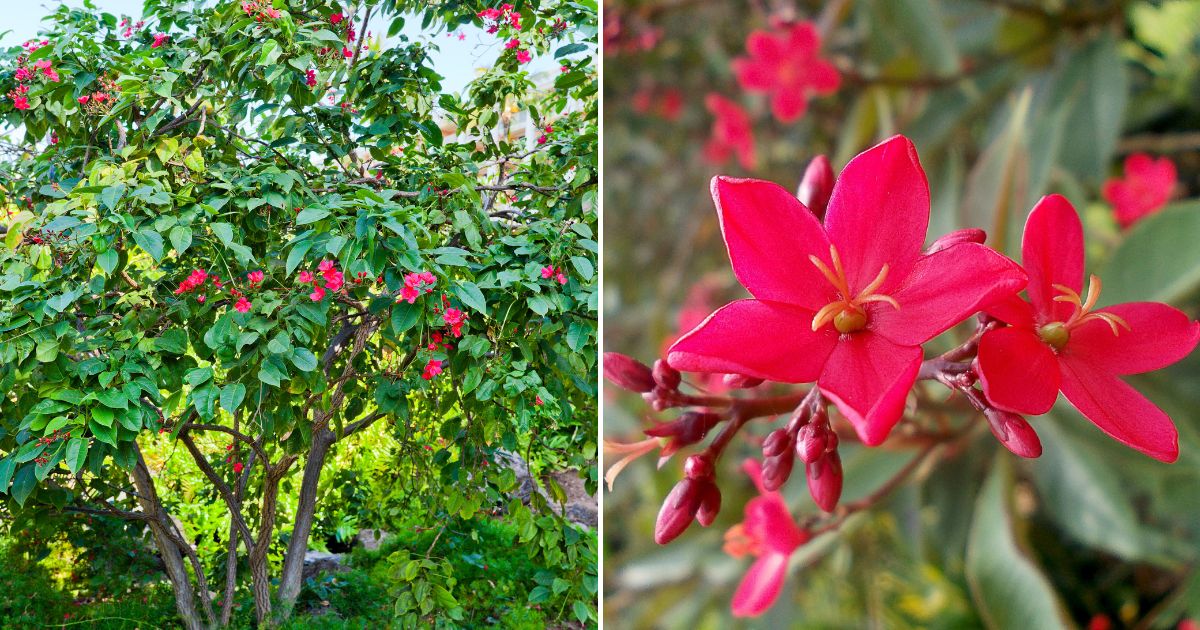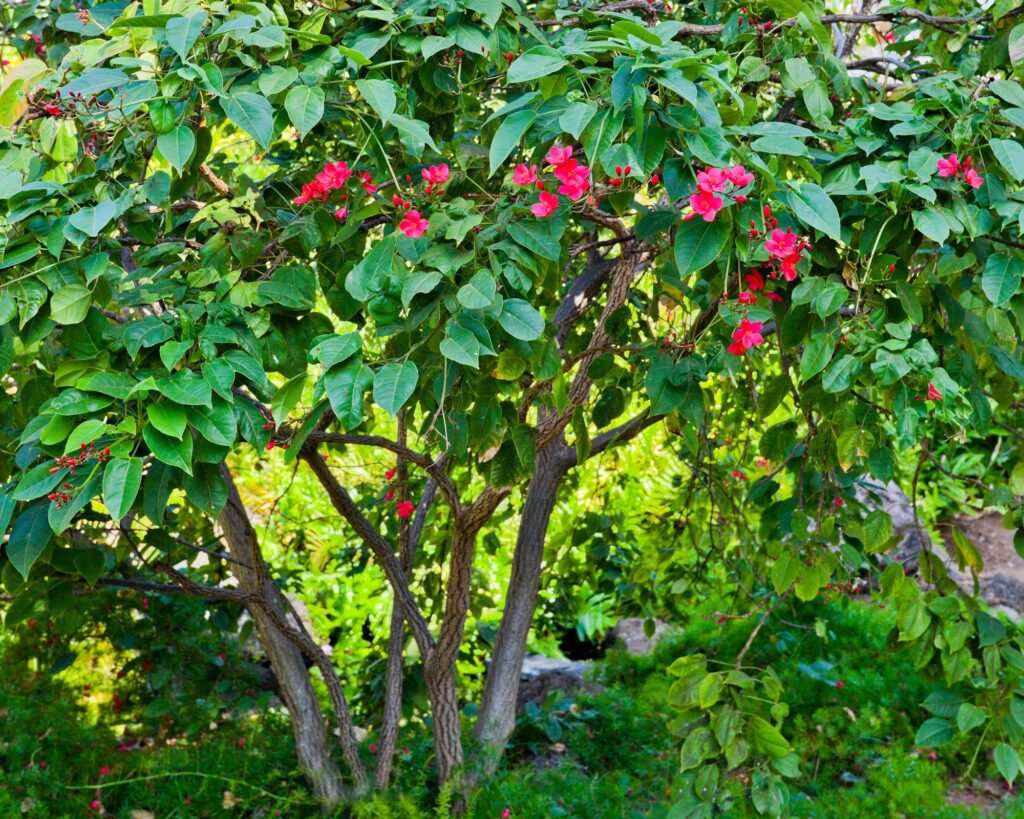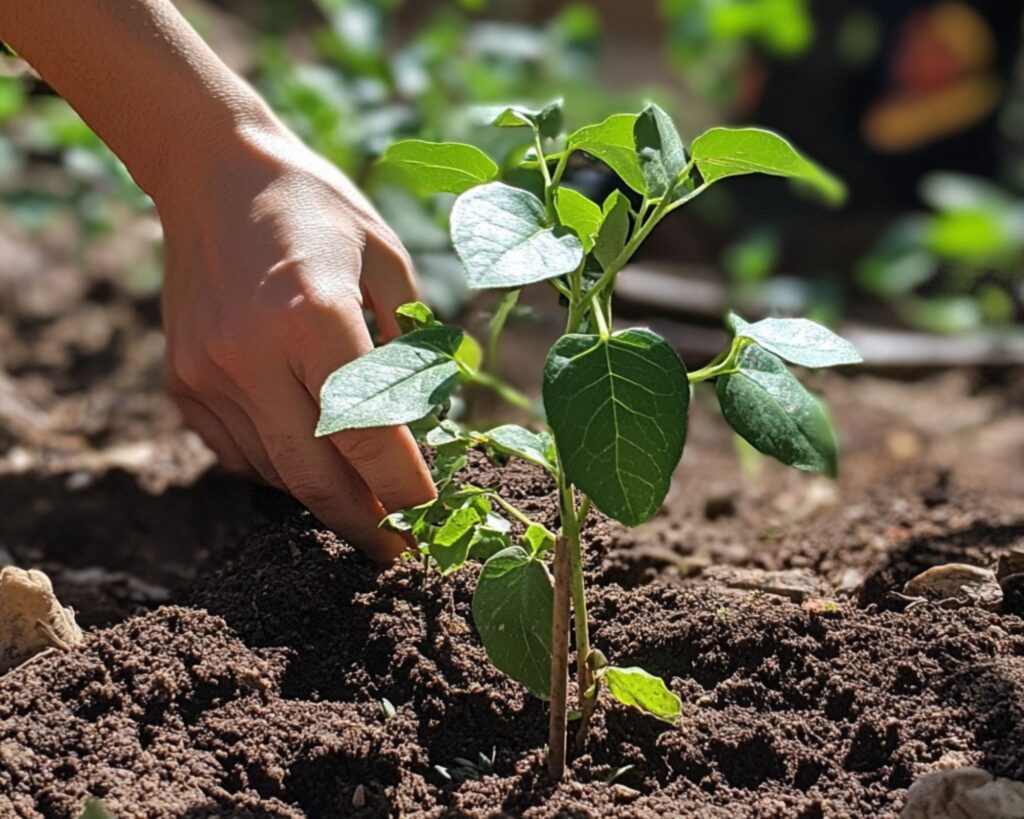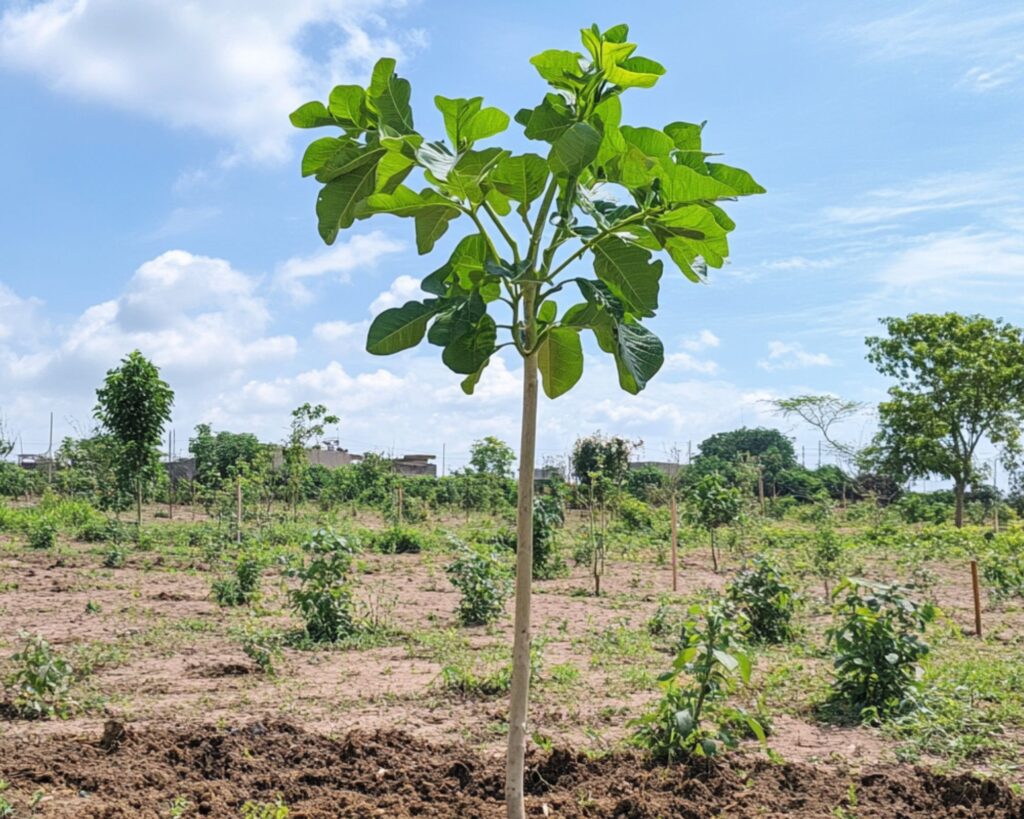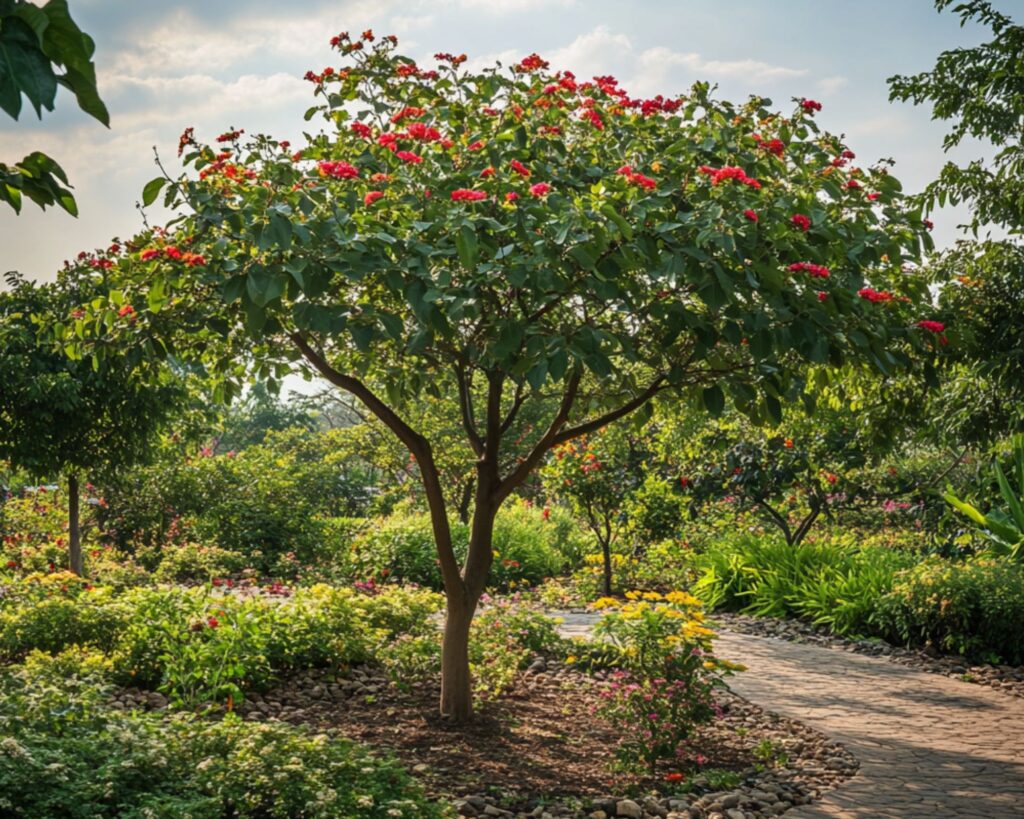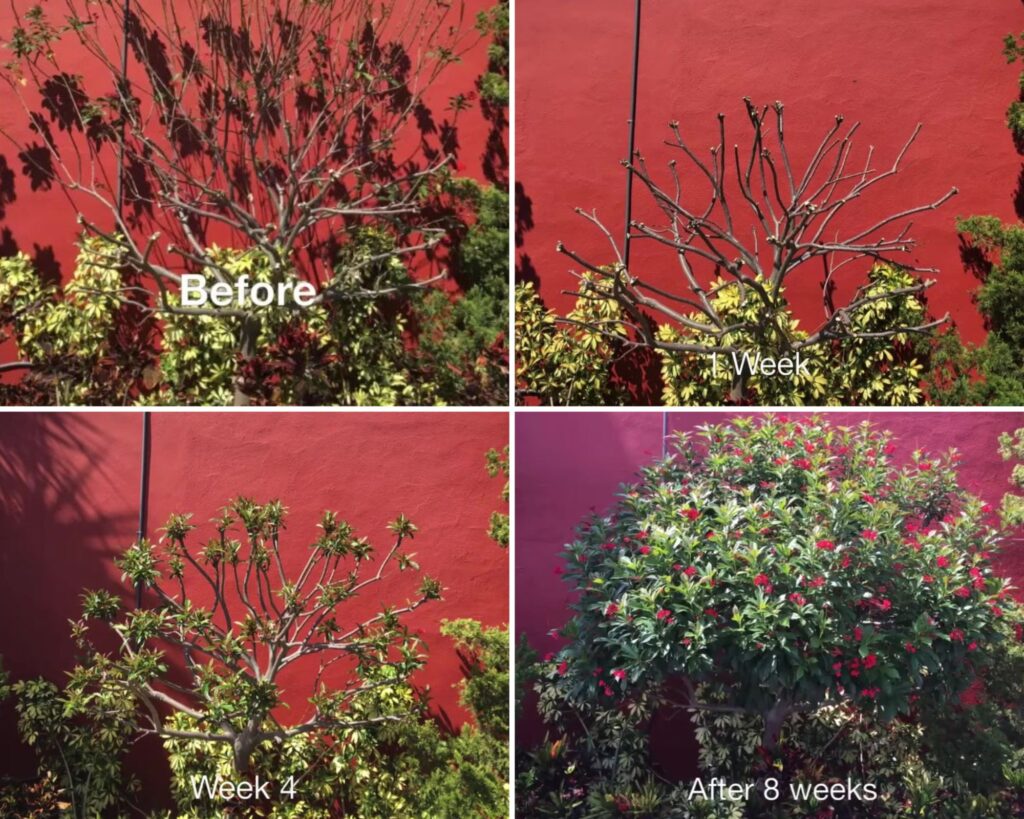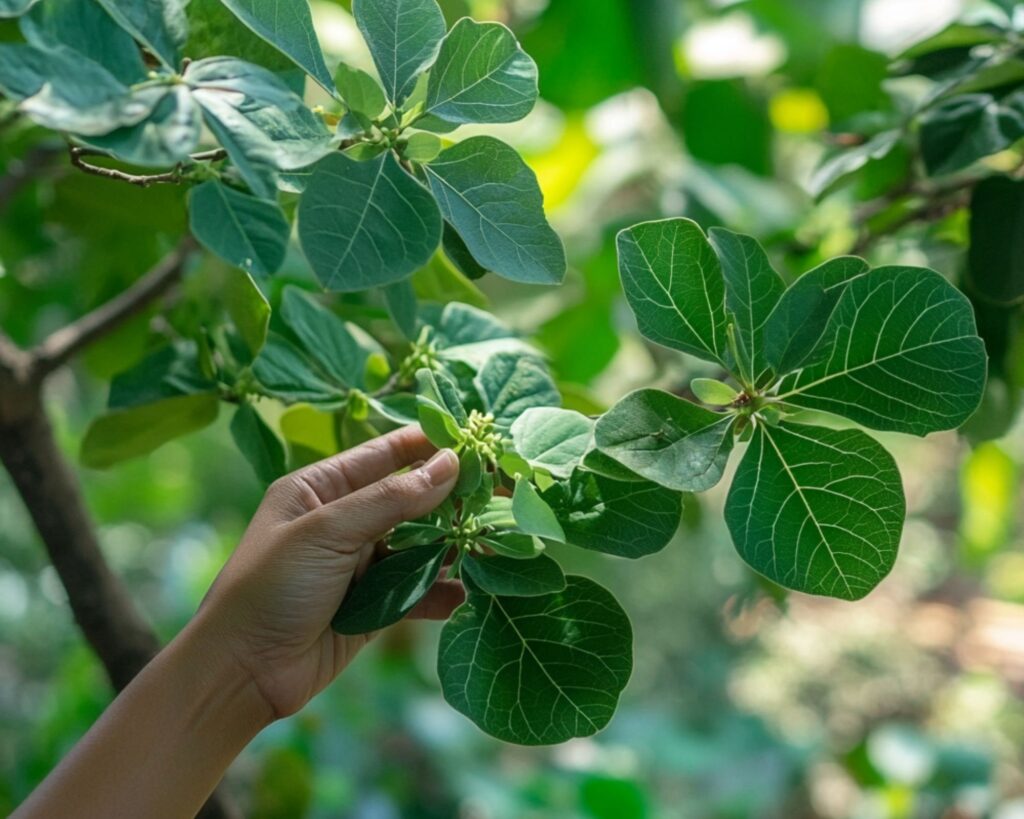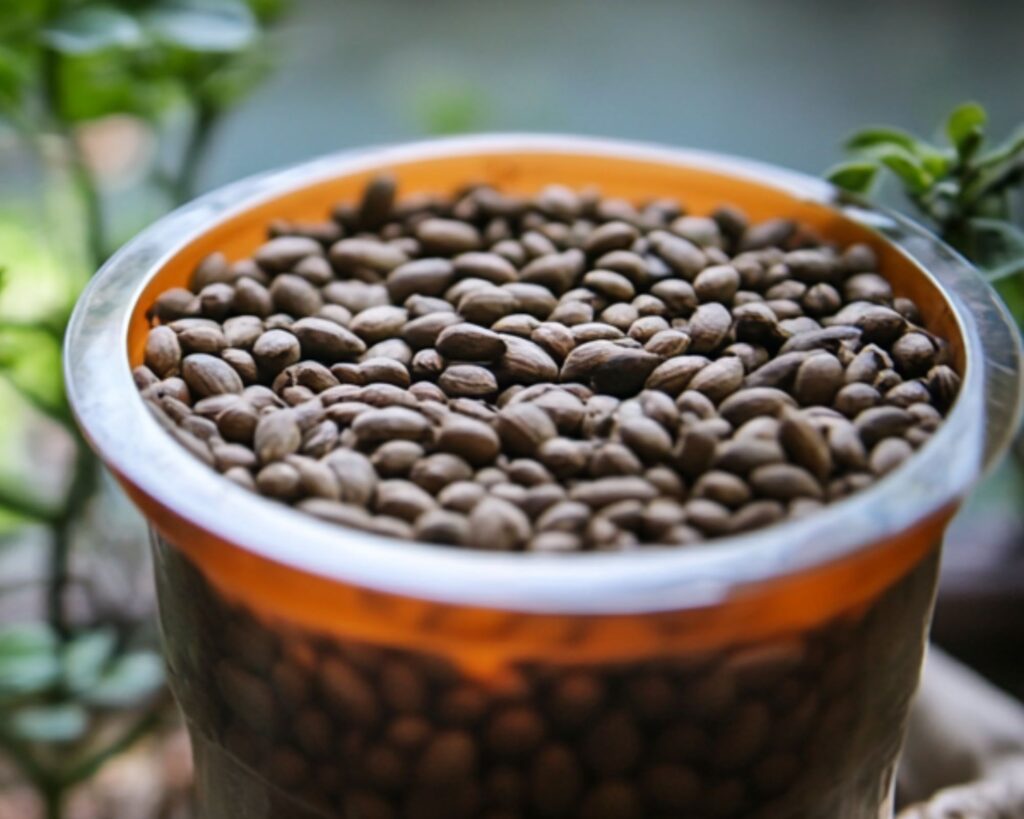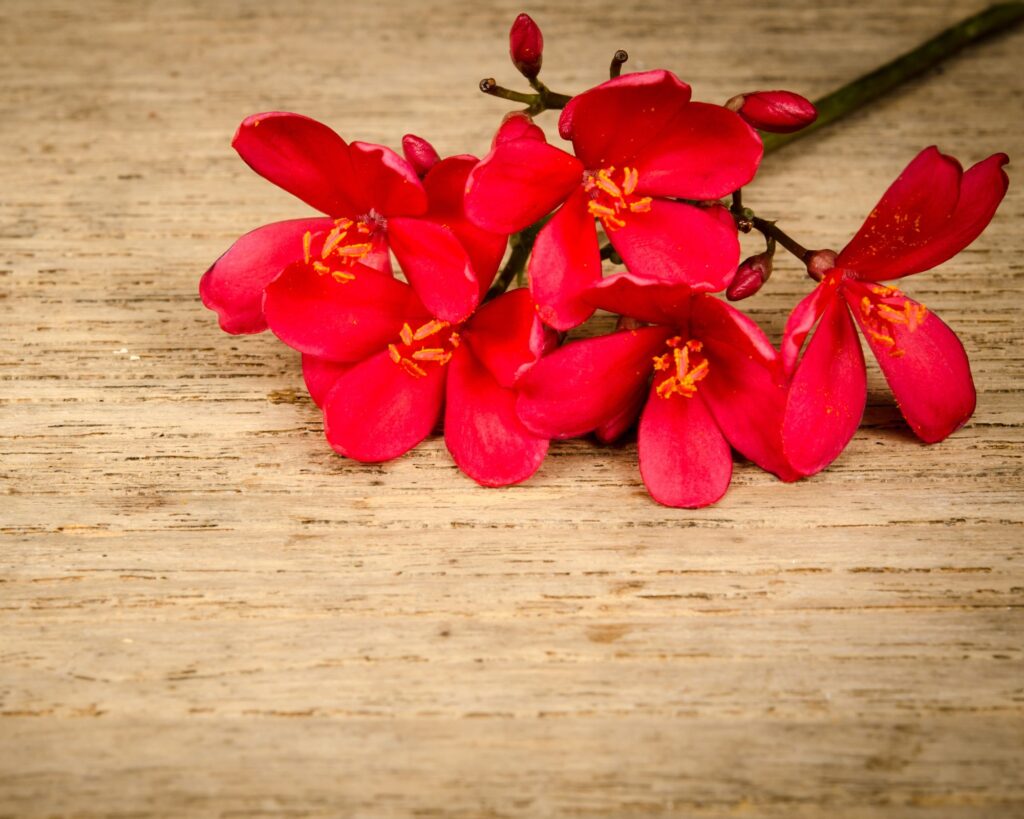Tired of struggling with high-maintenance plants that require endless care? Jatropha Integerrima is here to change that!
This striking tree offers vibrant red blooms and thrives with minimal effort, making it the perfect solution for anyone seeking a splash of color without all the hard work.
No green thumb? No problem – this tree flourishes in well-drained soil and sunny spots, so even novice gardeners can enjoy its beauty.
The best part? With just a bit of water and light pruning, you’ll create an irresistible garden feature that draws in butterflies and hummingbirds.
Say goodbye to complicated gardening and hello to a thriving Jatropha that transforms your space with ease. Ready to find out how? Let’s get started!
Understanding Jatropha Integerrima
Jatropha integerrima, also known as the peregrina or spicy jatropha, is a popular ornamental plant. It is known for its vibrant, star-shaped flowers and its resilience in various environmental conditions.
Origins and Characteristics
Originating from Cuba, this plant is well adapted to tropical climates. Jatropha integerrima is known for its striking red flowers that bloom year-round, offering a continuous splash of color.
The leaves are green and finely lobed, providing a lush backdrop to the bright blossoms.
This plant can grow as a shrub or small tree, reaching heights of up to 10 feet. It’s perfect for mixed borders or as a stand-alone specimen.
The plant is relatively low-maintenance, requiring minimal pruning to maintain its shape, making it an ideal choice for busy gardeners.
Environmental Benefits
Growing jatropha not only adds beauty to your garden but also supports local wildlife. The vibrant flowers attract pollinators like bees and butterflies, enhancing biodiversity.
Additionally, this plant is known for its adaptability to dry conditions, making it an excellent option for xeriscaping.
By integrating jatropha into your landscape, you contribute to a more sustainable and eco-friendly garden. The plant’s drought-resistant nature ensures minimal water usage, conserving this vital resource.
Furthermore, its ability to withstand high temperatures makes it suitable for areas facing heat stress.
Planting Your Jatropha Tree
Select the ideal spot, soil, and planting approach when you’re planting a Jatropha tree for successful growth. Consider soil type and location, and adhere to planting procedures to ensure a healthy start.
Optimal Soil Conditions
Jatropha trees prefer well-draining, sandy or loamy soil. These conditions help prevent waterlogging, which can harm the roots. The tree thrives in soil with a pH range of 6 to 7.5.
Before planting, amending the soil with organic matter like compost can boost its quality. This step improves nutrient content and drainage. Conducting a soil test can be beneficial in determining the specific nutrients your soil may need.
Adequate soil preparation creates a strong foundation for growth. Incorporating these measures helps ensure your Jatropha tree’s success.
Choosing the Right Location
Your Jatropha tree needs a sunny location to grow well, as it requires at least six hours of sunlight daily. Choose a site shielded from strong winds.
The tree should be positioned away from large structures or other trees that may block sunlight. It’s also essential to ensure that nearby structures are not affected by the tree’s growth.
Plan for sufficient space; mature Jatropha trees can reach 10 to 15 feet in height and width. This foresight ensures the tree has room to grow without obstruction.
Planting Guidelines
When you’re ready to plant your Jatropha tree, start by digging a hole that is twice the width and equal to the depth of the tree’s root ball.
Place the tree in the center of the hole, ensuring it’s level with the surrounding soil. Fill the hole half-full with soil, water it well, then complete filling the hole with the remaining soil.
Gently tamp down the soil to remove air pockets, being careful not to compact it too much. Apply a layer of mulch around the base to retain moisture and regulate temperature.
Water the newly planted tree thoroughly to settle it in its new environment.
Basic Care for Jatropha Integerrima
Jatropha Integerrima thrives with specific watering, sunlight, temperature, and fertilization practices. By following these guidelines, you ensure healthy growth and abundant blooming.
Watering Requirements
Jatropha Integerrima prefers consistent moisture but does not like to sit in soggy soil. Ensure you water the plant deeply, then let the top inch of soil dry before the next watering. During warm months, increase frequency, but reduce it in cooler seasons.
Mulching around the base can help retain soil moisture. Use well-draining soil to prevent root rot, and consider a pot with drainage holes if growing in containers. Adjust your watering schedule based on local climate conditions and rainfall.
Sunlight and Temperature Needs
This tropical plant enjoys full sun exposure, needing at least six hours of sunlight each day. While Jatropha Integerrima tolerates partial shade, less sunlight may reduce blooming.
In terms of temperature, Jatropha can handle high heat but is sensitive to cold. If temperatures drop below 50°F (10°C), consider bringing container plants indoors. Protect outdoor plants with covers during unexpected frost.
Fertilization Strategies
A balanced fertilizer applied every two months supports robust growth for Jatropha Integerrima. Choose a fertilizer that contains equal parts nitrogen, phosphorus, and potassium to provide all necessary nutrients.
You can use either a liquid or granular form, following the label instructions closely. Avoid overeating, as this may harm the plant. During winter, reduce fertilization since the plant’s growth naturally slows.
Regular feeding encourages lush foliage and plentiful flowers, keeping your Jatropha healthy year-round.
Pruning and Maintenance
Proper care for Jatropha integerrima involves regular pruning, disease prevention, and adjusting care with the seasons. This helps ensure a healthy and attractive plant.
Pruning Techniques
Pruning Jatropha is both an art and a science. You’ll want to trim your plant in spring, just before the growth spurt. Focus on cutting away dead or diseased branches. This encourages new growth and keeps the tree strong.
Use sharp, clean tools to avoid damaging your tree. Make your cuts at a 45-degree angle to promote healing. Remove branches that cross or rub together. This prevents future issues and allows for better air circulation.
Pruning also helps shape your Jatropha, giving it a neat and compact appearance. Don’t be afraid to trim boldly; your tree will thank you for it.
Pest and Disease Control
Jatropha is generally robust, but it’s important to watch for pests like aphids and whiteflies. Check regularly, as they can weaken your plant. If you spot them, start with non-chemical solutions like a strong water spray or insecticidal soap.
Keep an eye out for signs of disease such as yellowing leaves or black spots. These problems are often due to fungi or bacteria. Keeping the plant well-pruned improves airflow and reduces dampness.
Using preventive measures is key. By keeping the area around the tree clean and avoiding overhead watering, you’ll reduce risk factors significantly.
Seasonal Care Tips
Your Jatropha’s needs change with the weather. In spring and summer, water regularly but ensure proper drainage. Overwatering can lead to root rot. During fall, cut back on watering to prevent damp conditions.
Fertilize in spring with a balanced formula like a 10-10-10 mix. This provides nutrients during the active growth phase. Reduce feeding in winter. The plant is in a rest period and doesn’t need much besides occasional watering.
Adjust your care routines based on regional climate differences. In colder areas, bring potted Jatropha indoors during frosts, as they are sensitive to the cold.
Propagating Jatropha Integerrima
Growing Jatropha Integerrima from seeds or cuttings can be rewarding. Seed collection requires attention to timing, while cuttings provide a reliable method for faster propagation.
Seed Collection and Germination
To propagate Jatropha from seeds, wait for the fruit to ripen and open naturally. This indicates they are mature. Collect these seeds promptly to ensure they remain viable. Store them in a cool, dry place if not planting immediately.
To germinate, soak the seeds in water overnight. Plant them about an inch deep in a well-draining potting mix. Ensure the soil is kept moist but never soggy.
Warm temperatures and bright, indirect sunlight enhance germination success. You should notice sprouts emerging within a few weeks.
Cuttings and Transplanting
For propagation via cuttings, select healthy stems that are about 6 inches long. It’s best to take these cuttings during the growing season. Remove the lower leaves. Dip the cut end in rooting hormone for better results.
Plant the cuttings in a pot filled with well-draining soil. Water lightly and provide indirect sunlight. Cover with a plastic bag to maintain humidity, creating a mini greenhouse effect. Roots start developing within a few weeks.
Once roots establish, slowly acclimate the young plant to outdoor conditions before transplanting into the garden.
Jatropha Integerrima offers an exceptional blend of beauty and ease, making it a go-to choice for gardeners looking to add vibrant color without the hassle of high maintenance.
Its striking red blooms and minimal care requirements mean that even those without a green thumb can enjoy a thriving, attractive tree in their garden.
Say goodbye to gardening frustrations and embrace the simplicity of growing a Jatropha Integerrima – your effortless garden beauty awaits!
